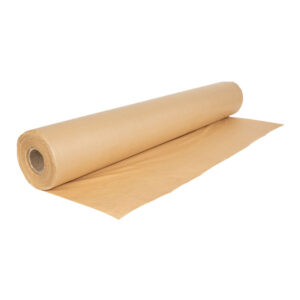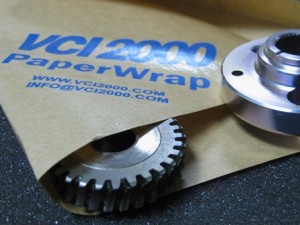Rust, the relentless adversary of metal objects, poses a constant threat to a wide spectrum of items, ranging from delicate machinery components to robust industrial equipment. This corrosive phenomenon not only results in costly repairs but can also impair the functionality of these objects. In extreme cases, it can lead to the complete failure of crucial equipment. Thankfully, there exists a powerful ally in the ongoing battle against rust: VCI (Volatile Corrosion Inhibitor) packaging. In this comprehensive exploration, we will navigate the intricate world of VCIs and their pivotal role in shielding metal items from rust and corrosion.
The Science of Rust: The Silent Underminer
Rust, scientifically known as iron oxide, is the consequence of iron and oxygen reacting with moisture. This gradual, yet inexorable process is responsible for the deterioration of countless metallic structures, including bridges, vehicles, and industrial machinery. The economic repercussions of rust are substantial, with billions of dollars allocated each year to address maintenance and repair issues related to rust.
The Imperative for Effective Rust Prevention
The importance of rust prevention cannot be overstated, as it is a crucial consideration for both industries and individuals. Whether you are a manufacturer striving to safeguard your products during transportation or a homeowner keen on preserving your tools, rust prevention is paramount. This is precisely where VCI packaging comes into play.
The Mechanics Behind VCI Packaging
VCI, or Volatile Corrosion Inhibitors, encompass compounds that emit corrosion-inhibiting molecules into the surrounding environment. These molecules, in turn, create a protective layer on the metal’s surface, effectively shielding it from the two principal catalysts for rust formation: moisture and oxygen.
Demystifying the Operation of VCIs
The function of VCIs can be elucidated through three key steps:
Evaporation: VCIs gradually evaporate within the enclosed space, forming a protective atmosphere.
Adsorption: VCI molecules adhere to the metal’s surface, establishing a minute, rust-resistant barrier.
Protection: This protective layer effectively impedes the contact of the metal with corrosive elements, thus arresting the rusting process.
VCIs can be integrated into a range of packaging materials, including bags, films, paper, and emitters, rendering VCI packaging versatile and highly effective in preventing rust across various applications.
The Multifaceted Applications of VCI Packaging
VCI packaging finds application in a diverse array of industries and scenarios. Some of the most widespread applications are listed below:
-
Automotive Industry
In the automotive sector, VCI packaging plays a vital role in safeguarding delicate components, such as engine parts and brake calipers, during transportation and storage. It ensures the preservation of these critical elements, reducing maintenance expenses and enhancing performance.
-
Electronics Manufacturing
Electronic components and circuit boards are particularly susceptible to rust during assembly and transit. VCI packaging serves as a protective shield for these sensitive electronic parts, ensuring their proper functioning and extended shelf life.
-
Oil and Gas Sector
In the oil and gas industry, equipment and machinery are frequently exposed to harsh environmental conditions. VCI packaging assumes a crucial role in preserving pipelines, valves, and drilling equipment, thereby diminishing the risk of costly corrosion-induced failures.
-
Aerospace and Defense
The aerospace and defense sectors rely extensively on VCI packaging to preserve aircraft components, weaponry, and military vehicles. This is imperative for ensuring the longevity and safety of these pivotal assets.
-
Metalworking and Manufacturing
In the realm of metalworking, VCI packaging proves instrumental in conserving raw materials, finished products, and tooling. This translates into cost savings and the amelioration of product quality.
-
Consumer Goods
For everyday consumers, VCI packaging serves as an economical and efficient method to protect tools, firearms, and other metal possessions. It facilitates the upkeep of household equipment in pristine condition.
The Advantages of VCI Packaging
The adoption of VCI packaging brings forth several noteworthy advantages:
-
Environmentally Friendly
VCI packaging is environmentally sustainable, as it obviates the need for hazardous rust-prevention coatings and chemicals.
-
Cost-Effective
In comparison to traditional rust prevention methods, such as oil coatings and dehumidification systems, VCI packaging emerges as a cost-effective alternative. It cuts maintenance, repair, and replacement costs.
-
User-Friendly
The utilization of VCI packaging is straightforward. Placing the metal item within a VCI bag or wrapping it in VCI paper is all it takes to initiate the protective process.
-
Prolonged Protection
VCI packaging exhibits the capacity to provide protection for extended durations, often spanning two years or more, contingent upon the product and packaging material employed.
-
Residue-Free
Diverging from conventional rust prevention techniques that result in oily residues on the metal surface, VCI packaging leaves no discernible trace. This attribute is particularly advantageous in scenarios where cleanliness is paramount.
Selecting the Optimal VCI Packaging
Choosing the most suitable VCI packaging for your specific requisites is pivotal. Consider the following factors:
-
Material
VCI packaging materials are diverse, and it is imperative to select one that is congruent with the item you intend to safeguard. Common options encompass VCI bags, VCI paper, VCI films, and VCI emitters.
-
Duration of Protection
Assess the duration for which you require protection. Certain VCIs are designed for short-term applications, while others are engineered to provide protection over several years.
-
Size and Configuration
Ensure that the selected VCI packaging can comfortably accommodate the size and configuration of the metal item under protection. Tailored VCI packaging solutions are available for unique requirements.
-
Environmental Conditions
Evaluate the environmental conditions to which the VCI packaging will be subjected. In instances of extreme conditions, you may necessitate a more robust VCI solution.
Best Practices for the Effective Use of VCI Packaging
To maximize the benefits of VCI packaging, adhere to these best practices:
-
Meticulous Cleaning
Before introducing an item into VCI packaging, ascertain that it is clean and devoid of pre-existing rust or contaminants. The cleaning of the metal surface augments the efficacy of the VCI.
-
Hermetic Sealing
Maintain an airtight seal on VCI packaging to forestall the ingress of moisture and oxygen. Such hermetic sealing is indispensable for the optimal functionality of the VCI.
-
Periodic Surveillance
Periodically inspect the items safeguarded by VCI packaging to ensure the continued integrity and functionality of the packaging. Replace any damaged packaging as necessary.
-
Compatibility Assessment
Confirm the compatibility of the chosen VCI packaging material with the specific type of metal being preserved. Some metals may necessitate specific VCI formulations for ideal protection.
Debunking VCI Packaging Myths
There are prevalent myths regarding VCI packaging that merit clarification:
Myth: VCIs are Harmful
Fact: VCI packaging is entirely safe and environmentally friendly. The VCIs employed are non-toxic and pose no harm to individuals or the environment.
Myth: VCIs Require Direct Contact
Fact: VCIs do not necessitate direct contact with the metal. They operate by creating a protective environment within the packaging, thereby shielding the metal from a distance.
Myth: VCIs Only Function on Clean Metal
Fact: While it is advisable to apply VCI packaging to clean metal surfaces, VCIs can also aid in protecting metal surfaces afflicted by existing rust. Nonetheless, it is recommended to clean the metal before applying VCI packaging for optimal results.
Conclusion
Rust, with its insidious and relentless nature, poses a formidable threat to metal items over time. VCI packaging emerges as a reliable and cost-effective solution for combating rust and corrosion, thereby ensuring that your invaluable assets retain their pristine condition. Whether you are involved in the automotive industry or an individual seeking to protect your cherished possessions, VCI packaging stands as a stalwart guardian in the perpetual battle against rust.






